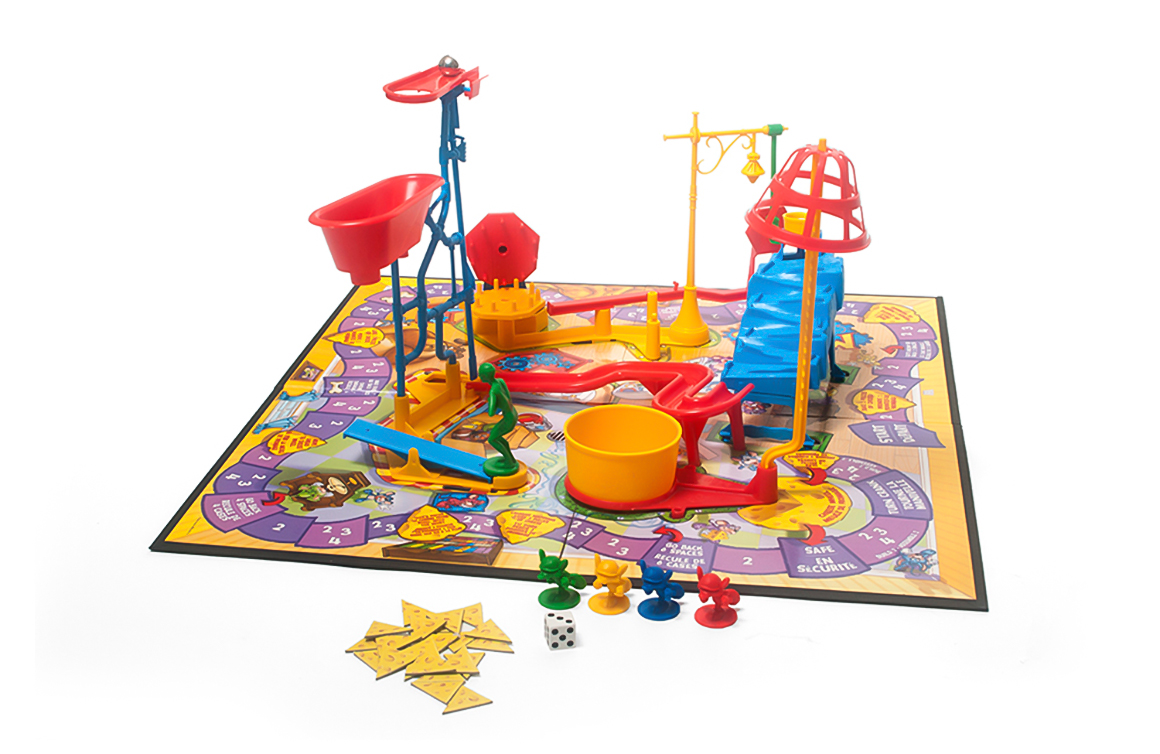Released in 1963 by Ideal, and designed by Marvin Glass & Associates, Mouse Trap was one of the first mass-produced, three-dimensional board games. The design of Mouse Trap draws inspiration from Rube Goldberg, a 20th-century cartoonist who became well known for his drawings of complex contraptions that performed rudimentary tasks.
Gameplay in Mouse Trap is divided into two phases. Initially, players move around the board and work together to construct a “trap” consisting of more than 20 individual parts. Once the trap is complete, the players attempt to use it to capture other players (conveniently represented as mice tokens on the board) and knock them out of the game. The last player standing is declared the winner.
In a typical Rube Goldberg drawing, a single event would set off a chain reaction of other events leading to the desired outcome. In Mouse Trap, the process begins with the turn of a crank that causes gears to turn, levers to move, a bucket to tip over, a ball to roll, a see-saw to activate, and ultimately a plastic cage to drop onto an unsuspecting token. Part of the game’s appeal is that the trap doesn’t always work as expected (another Rube Goldberg calling card) allowing the player a chance to live another day (or, in this case, play another turn.)
The basic premise and setup of the Mouse Trap have remained remarkably consistent over the game’s 50+ years. In the 1970s, the game was updated to include the concept of cheese pieces that players could collect and use to move other players’ mouse tokens into trap positions.
The game was a huge success for Ideal and spawned two less successful follow-ups with a Goldberg-ian influence: The Crazy Clock Game was released in 1964, and Fish Bait in 1965.
Note: If you buy something using the eBay link in this story, we may earn a small commission. Thank you for supporting independent toy journalism!

